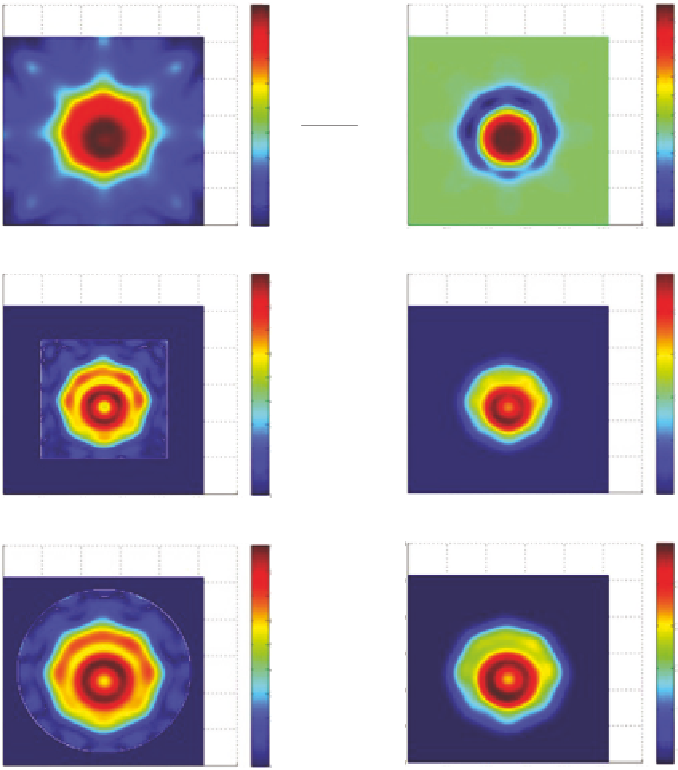Image Processing Reference
In-Depth Information
(a)
300
(b)
300
10
9
8
7
6
5
4
3
2
3.4
3.2
3
2.8
2.6
2.4
2.2
2
1.8
1.6
1.4
250
250
200
200
150
150
100
100
50
50
0
0
0 0
100 150 200 250 300
0 0
100 150 200 250 300
300
(c)
(d)
300
9
8
7
6
5
4
3
2
1
0
250
250
3
200
200
2.5
150
150
2
100
100
1.5
50
50
1
0
0
0 0
100 150 200 250 300
0 0
100 150 200 250 300
300
(e)
9
8
7
6
5
4
3
2
1
0
(f)
300
250
250
3
200
200
2.5
150
150
2
100
100
1.5
50
50
1
0
0
0 0
100 150 200 250 300
0 0
100 150 200 250 300
Figure 9.16
FoamDielInt at 6 GHz: (a) Born reconstruction with DFT, (b) cepstral reconstruction using DFT,
(c) Born reconstruction using PDFT - a square prior, (d) cepstral reconstruction using PDFT - square prior, (e) Born
reconstruction using PDFT - circular prior, and (f) cepstral reconstruction using PDFT - square prior.
cepstral filtering with the DFT, since the background permittivity level has
to be the lowest level for this object. Figures 9.16d and 9.16f show that the
PDFT has addressed this problem of an incorrect background permittivity.
The effect of two different prior functions used with the PDFT is also shown:
one a square and the other a circle. The improvement using these is signifi-
cant, and the choice of prior is not that critical, as expected when it is large
compared with
V
. Considering the fact that FoamDielInt is a strong scattering
object, even first Born reconstructions have shown some improvement with
the use of PDFT, as is evident from Figures 9.16a and 9.16c.
Since each illumination frequency generates a different
V
(
r
)〈Ψ〉 with
V
being the same and 〈Ψ〉 different for each wavelength, it follows that each
illumination frequency provides us with different information and useful
redundancy. In other words, changing the frequency of the incident field will








Search WWH ::

Custom Search